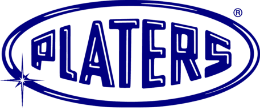Chrome Kill #318
Description:
Chrome Kill #318 is a powdered blend of specially designed reducing agents, surfactants and pH adjusters used to neutralize chromic acid. Chrome Kill #318 has three (3) important functions in the chrome shop:
- Clean-Up of Chrome Spills.
- Removing Chrome Stains.
- Killing Chrome in Rinses.
Chrome Kill #318 acts much faster and more completely than bisulfite and caustic does.
All chrome shops should keep Chrome Kill #318 on hand, at lease 300 lbs. for emergencies.
Mechanism
Chrome Kill #318 reduces chromic acid to the relatively harmless trivalent form. The pH adjuster in the formulation then renders the material to a neutral state. In the neutral trivalent form, chromium is non-staining and is not considered overly harmful. The residual reducers in the formulation provide both immediate and long-term action.
Chrome Stains
Dissolve the Chrome Kill #318 in hot water, using at least 100 grams/liter (approx. 2 heaping tablespoons per cup). Apply with a spray bottle or a rag to the stained area. Allow the stain to soak for 5-10 minutes and flush with a small amount of fresh water. Stubborn or old stains may take several applications (or scrubbing with a brush) for complete removal. For porous surfaces, like cinder block or etched concrete, apply as a slurry directly to the stain with a small amount of water, and allow to soak in for at least 30 minutes while keeping wet.
Chrome Spills
Chrome Kill #318 is extremely helpful in eliminating the immediate hazard involved with chrome spills. It is used for floors and pits, and for soil contamination. The use of Chrome Kill #318, in these situations, eliminates the presence of hexavalent chromium and renders the spill much less acidic. When properly used, the material will have a neutral pH and contain only trivalent chromium. Wear a respirator when cleaning chrome spills as the Chrome Kill #318 will release acidic sulfur fumes when reacting. Contain the spill and locate the source so as to eliminate further contamination. Slowly pour the Chrome Kill #318 powder onto the spill. Agitate thoroughly until a slurry is formed and all of the white powder has been consumed. The resulting color should be dark green. Sweep up and put into a liquid tight waste container. Be certain to use proper labeling. Notify the State Emergency Response Commission, SERC, of the spill. They will determine what further action, if any, is to be taken. For contaminated soil, follow the same procedures except add a slight amount of water so as to activate the Chrome Kill #318 powder.
Chrome Rinsing
Chrome Kill #318 is used as an additive for final rinse tanks in both decorative and hard chromium plating operations. The advantages are as follows:
A. Eliminates chromium staining on parts.
B. Provides “free rinsing” and fast drying.
C. Improves waste treatment load by pre-reducing the chromium.
Parts should first be rinsed in a recovery type operation. Chrome Kill #318 is then used as the final rinsing step. The Initial addition is only 1.0 oz./gal., maintenance additions of 0.5 oz./gal. should be made as needed. The operating temperature range is 90-150 deg. F. Air or mechanical agitation is recommended. The bath, when first made up, will be clear. During use, it will take on a normal darker color. Routine additions will maintain the proper concentration of Chrome Kill #318. Any red – brown color is indicative of a full charge addition being needed, i.e.: 1.0 oz./gal. The Chrome Kill #318 bath life is extremely long. It will, however, require periodic dumping.
Equipment
When used in a tank for chrome rinsing, suitable tank lining materials include ChemLock #200, Koroseal, polypropylene, polyethylene and 316 Stainless Steel. Heaters should be of Titanium, 316 S.S. or Teflon. Ventilation is recommended for hot Chrome Kill #318 tanks.
Disposal
All Chrome Kill #318 products, liquids and by-products that contain chromium, in any form, must be disposed of by approved methods. Liquids can be handled in normal waste treatment systems. Dirt, spills and similar materials should be sent to a licensed waste handler. Follow all environmental regulations with regard to proper disposal of the product.
Caution
The plating bath contains chromic acid, sulfuric acid and the Dura additive outlined above. These are all industrial chemicals and must be handled carefully and in accordance with the directives provided in the individual SDS forms.
Read and understand the SDS on all of these chemicals before handling or using. Ensure that all regulatory standards are followed and limit personal exposure as required for Cr(VI) by OSHA.
Avoid personal contact with these chemicals, avoid splashing and avoid breathing any fumes released during operation. Do not inhale any dust, mist or vapors from these chemicals. Do not allow these products to contact the skin or eyes. In case of contact, flush immediately with large amounts of fresh water and seek immediate medical attention.
Wear protective clothing such as aprons, gloves, face masks and respirators. Be sure that adequate eyewashes and emergency showers are available nearby before handling or using any of these chemicals.
Designated work clothing should be worn while using these chemicals and the worker(s) should thoroughly shower and change into fresh-clean street clothing before going home. Decontaminate all work clothing before reuse.
The user is responsible for providing adequate work clothing, personal protection, and limiting personal exposure and providing any required clean-up, decontamination as well as any needed medical attention.
